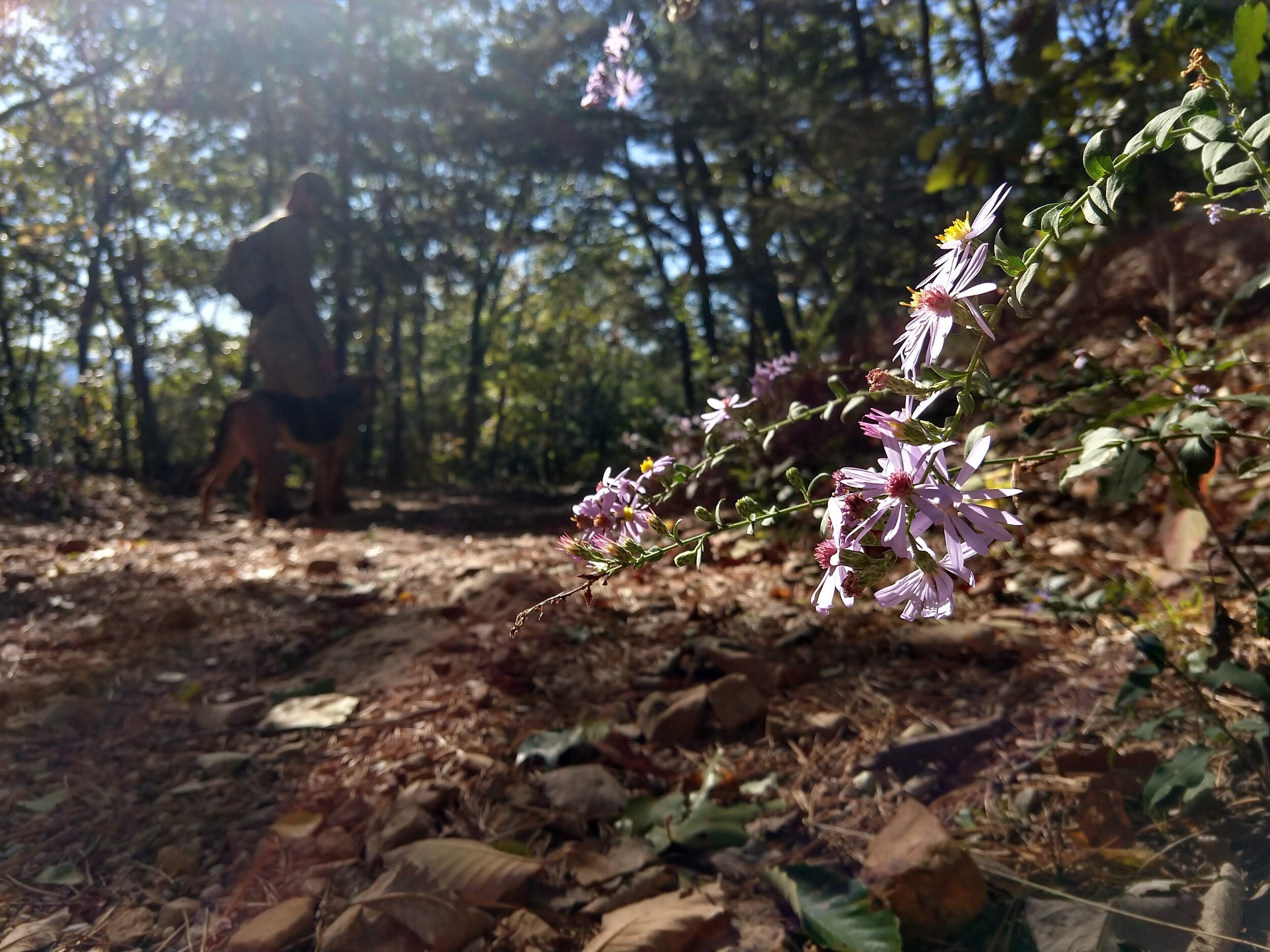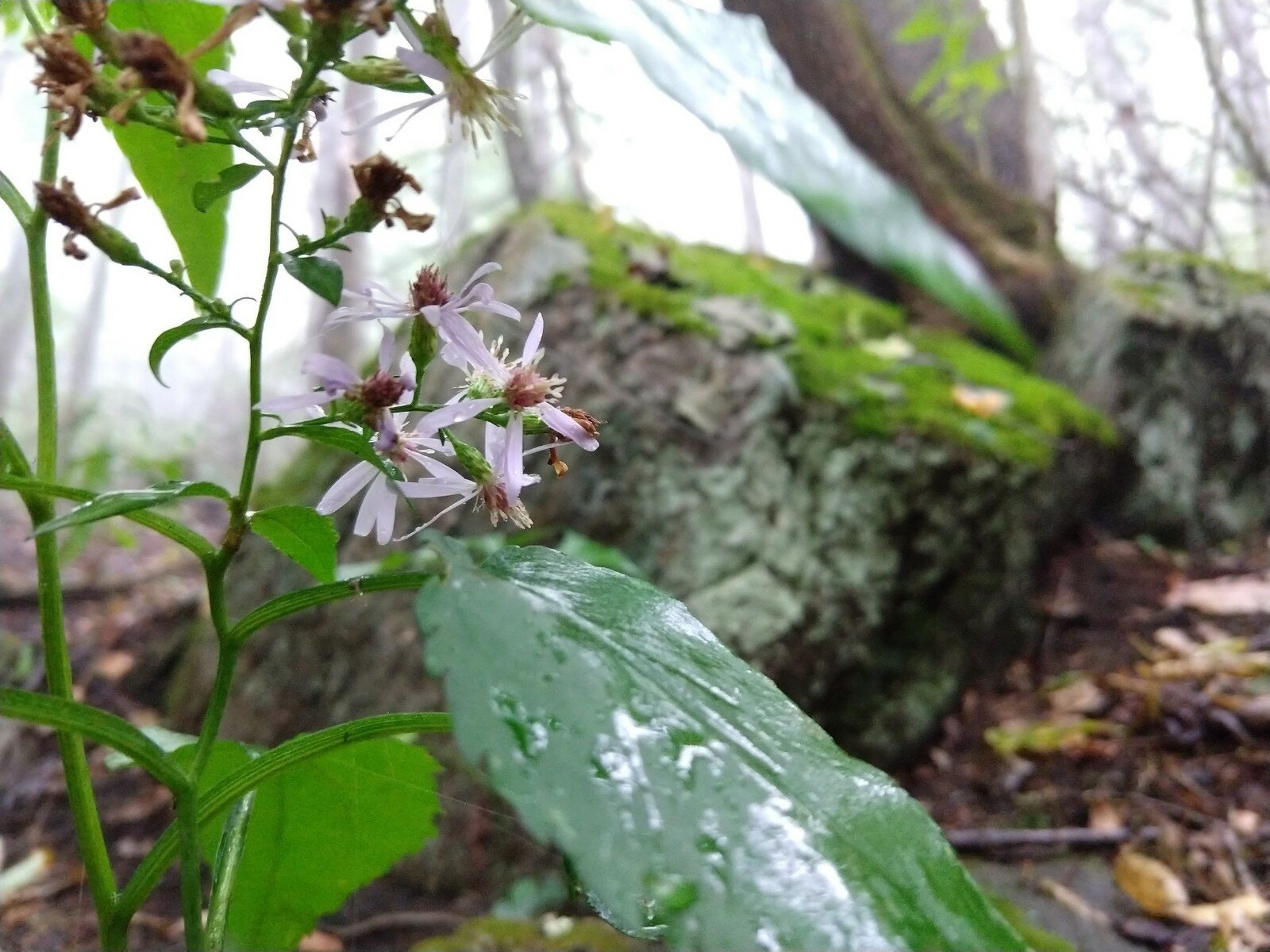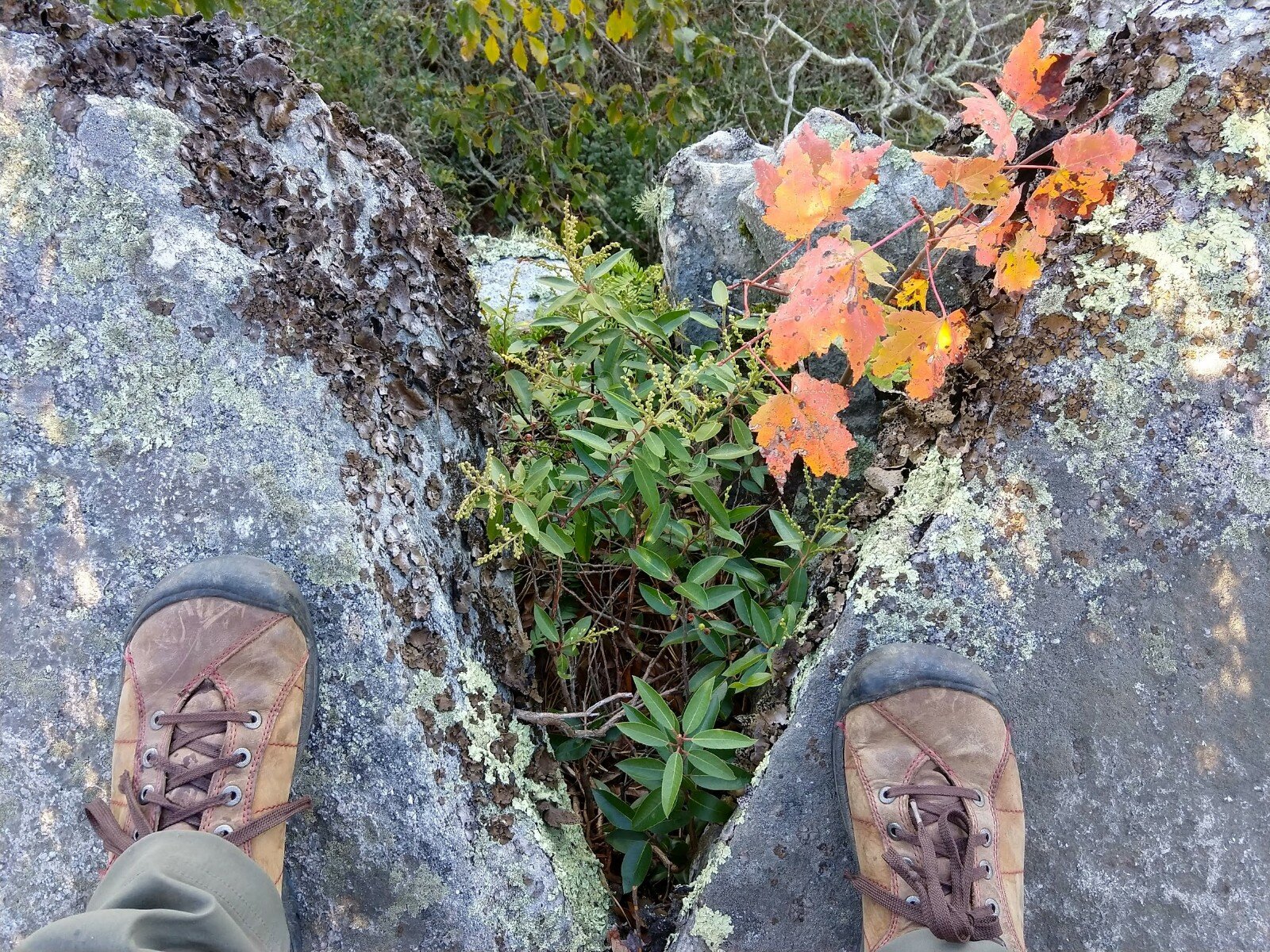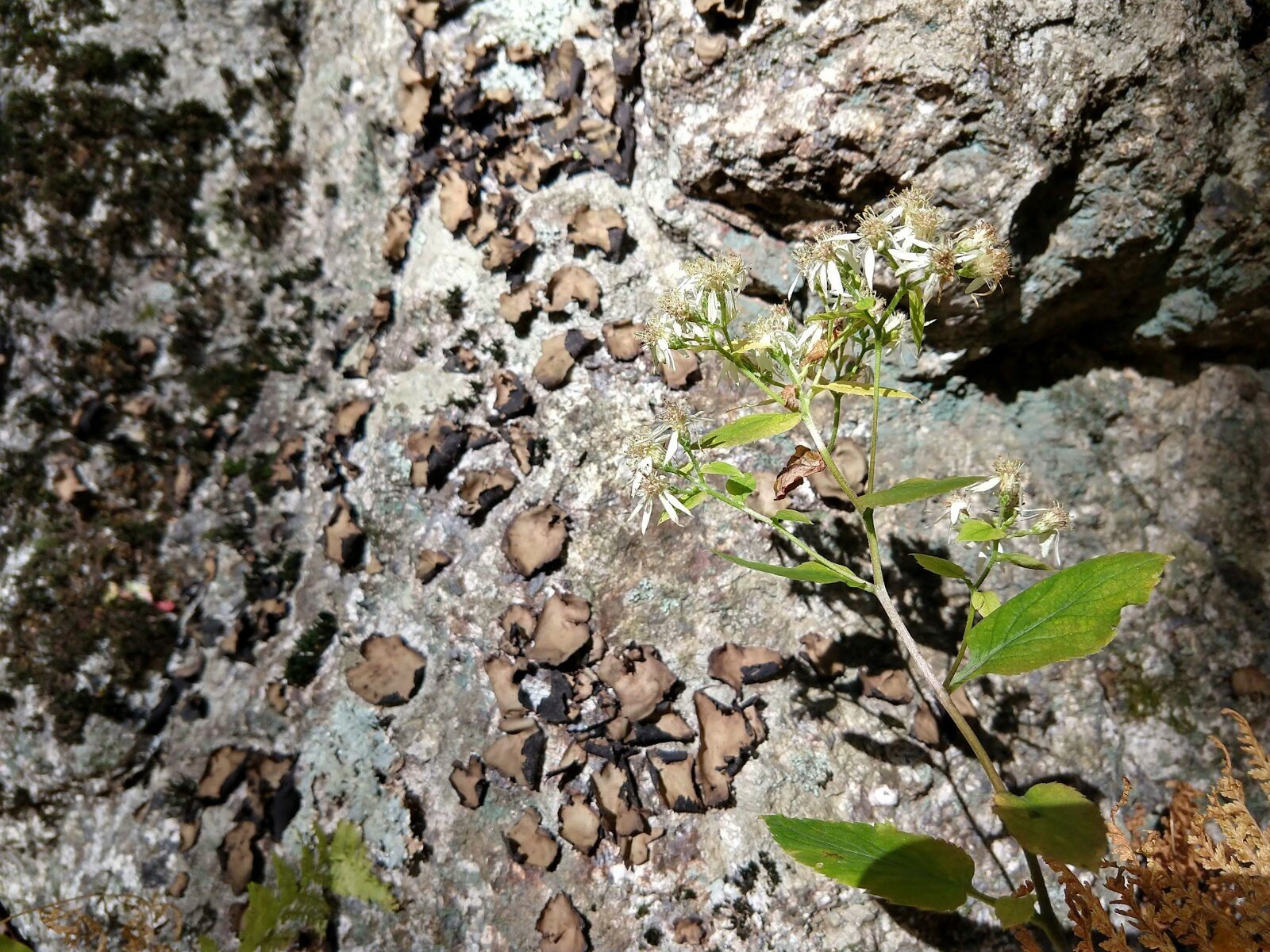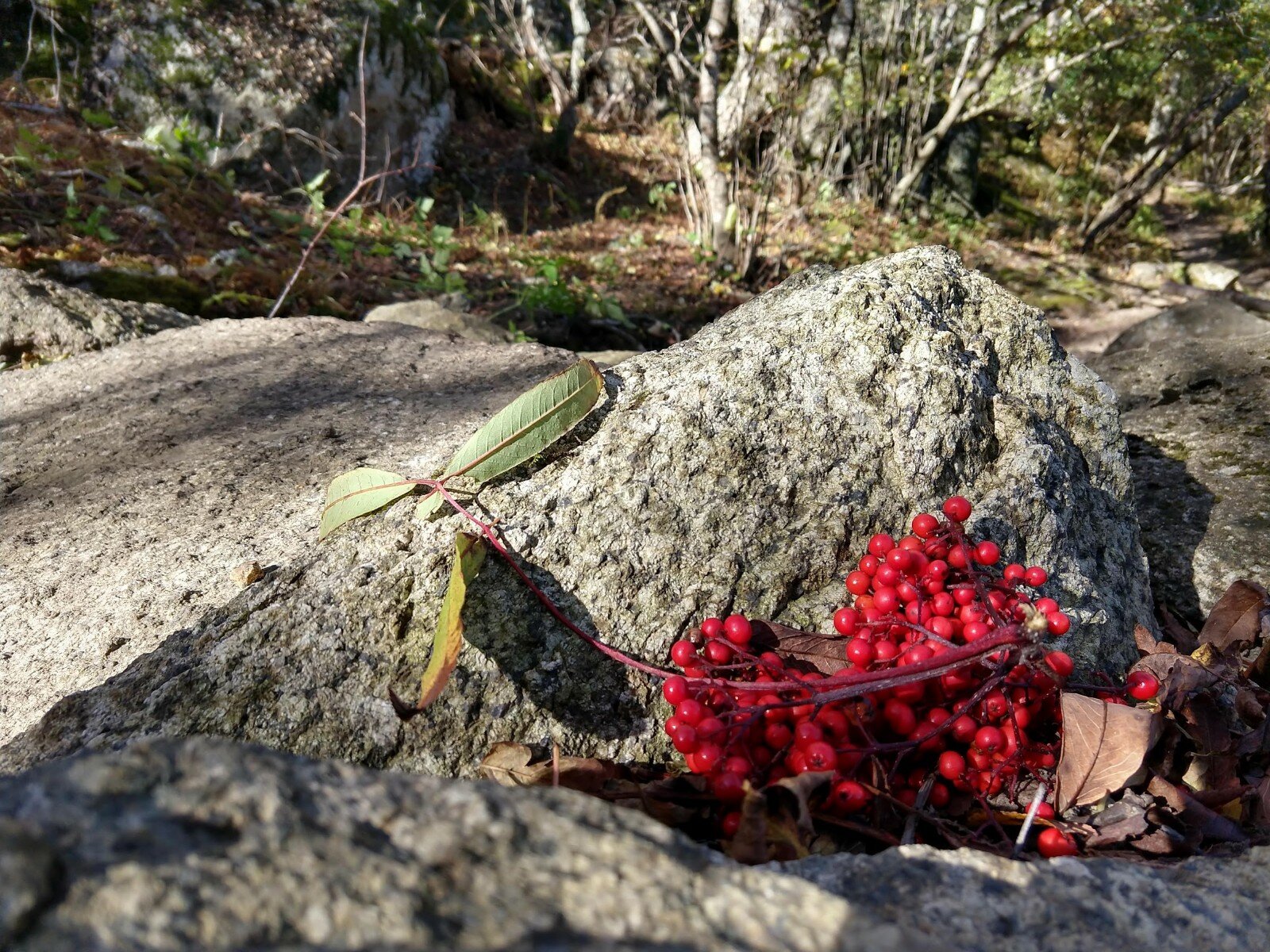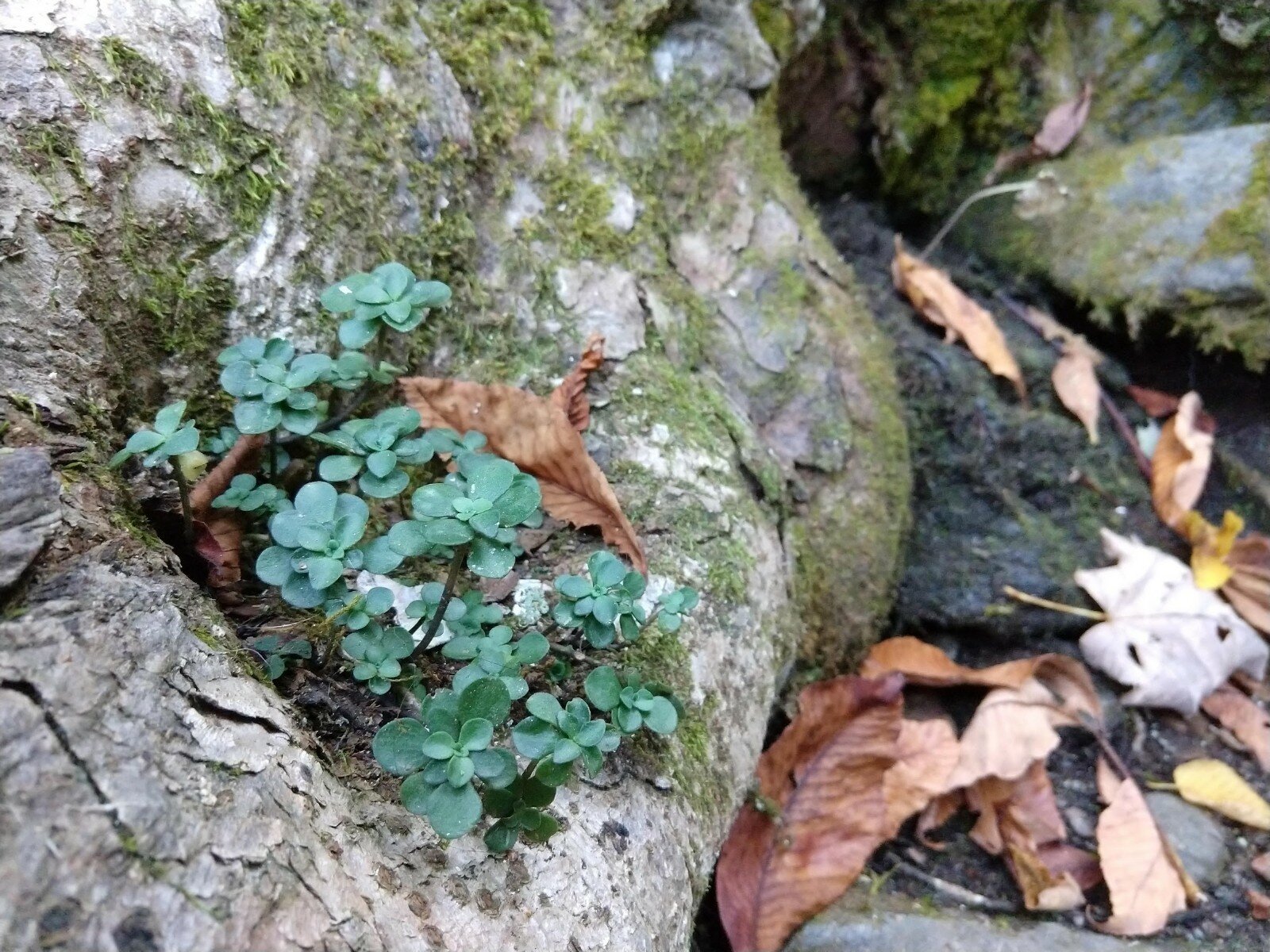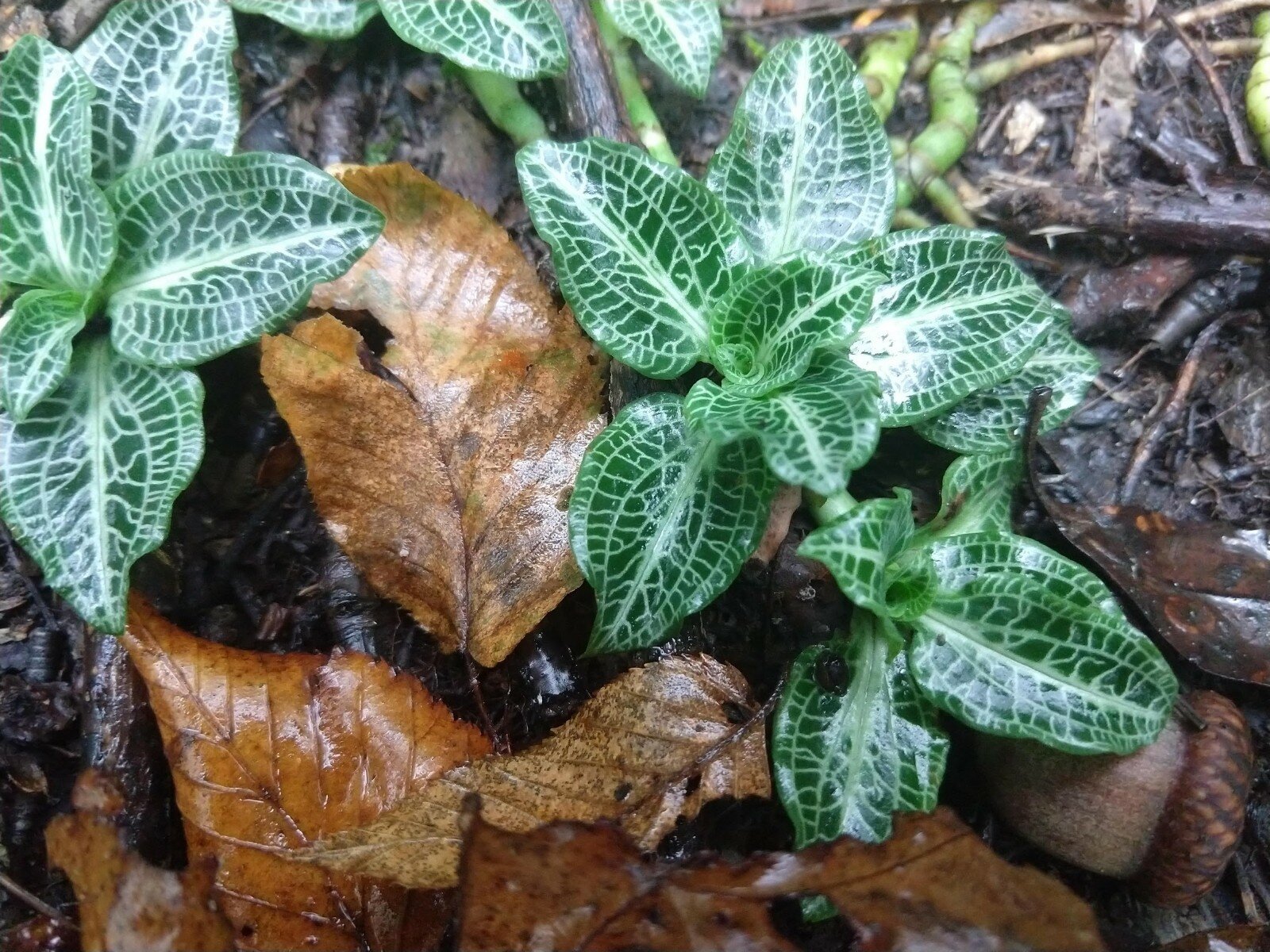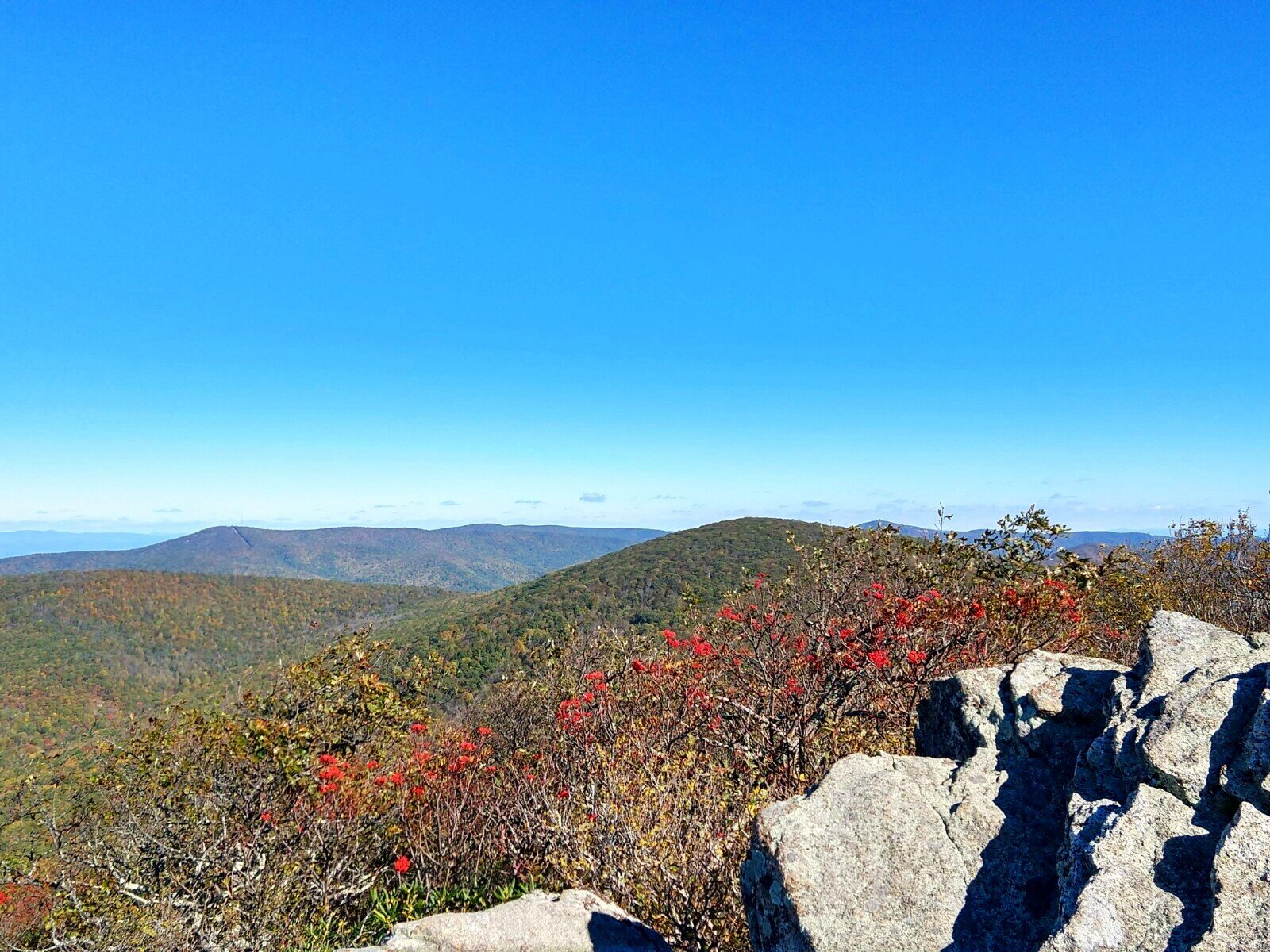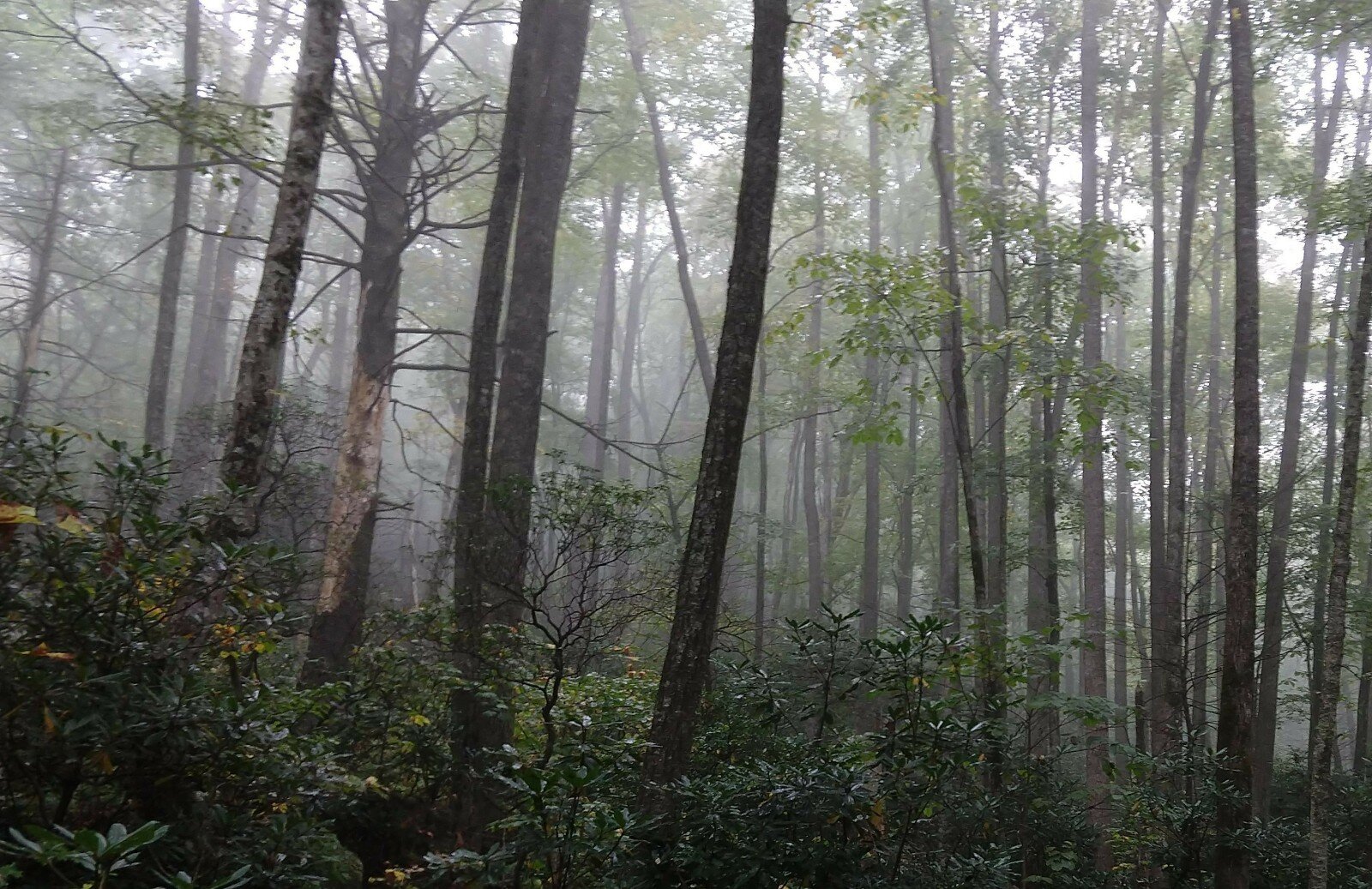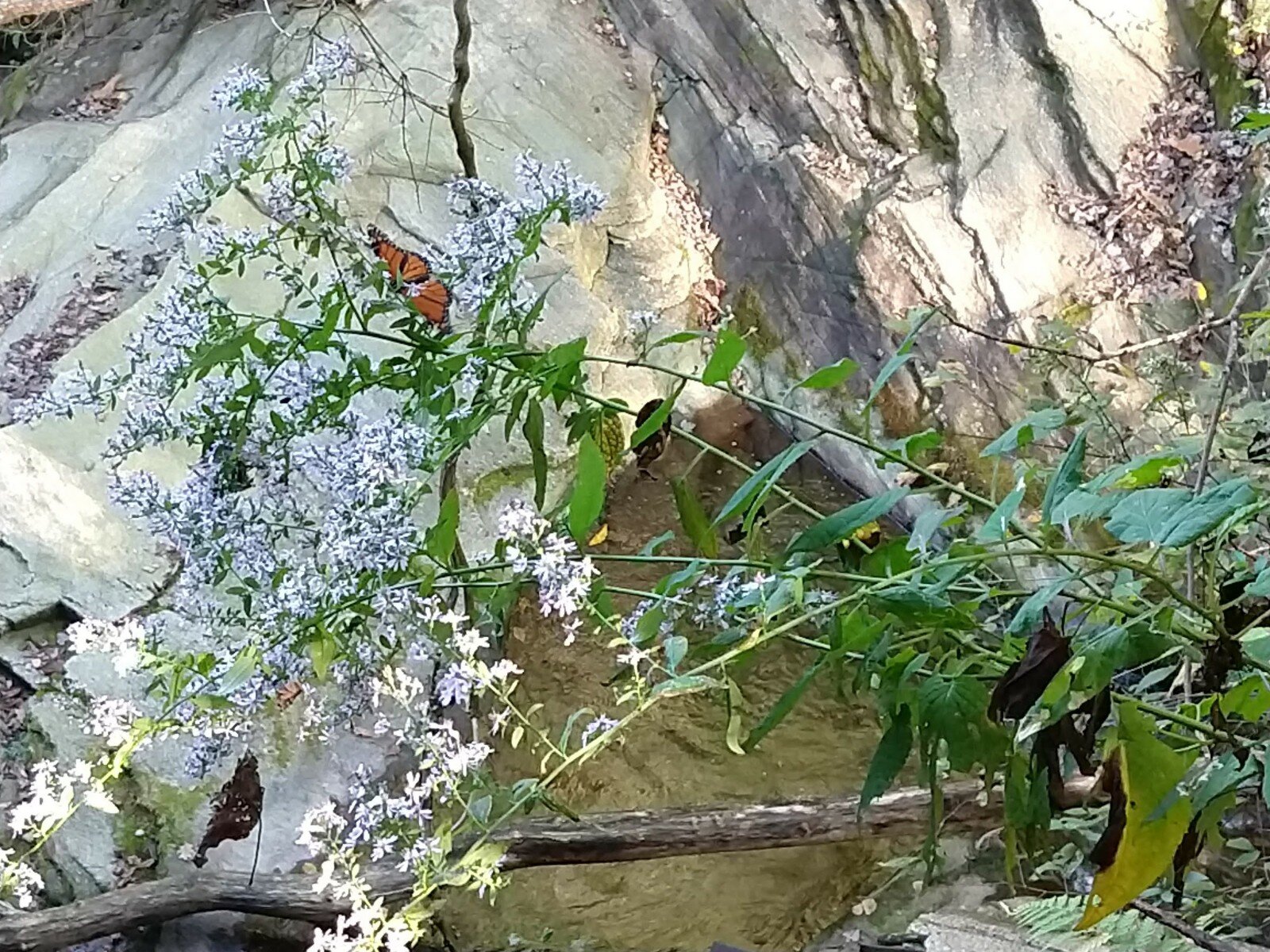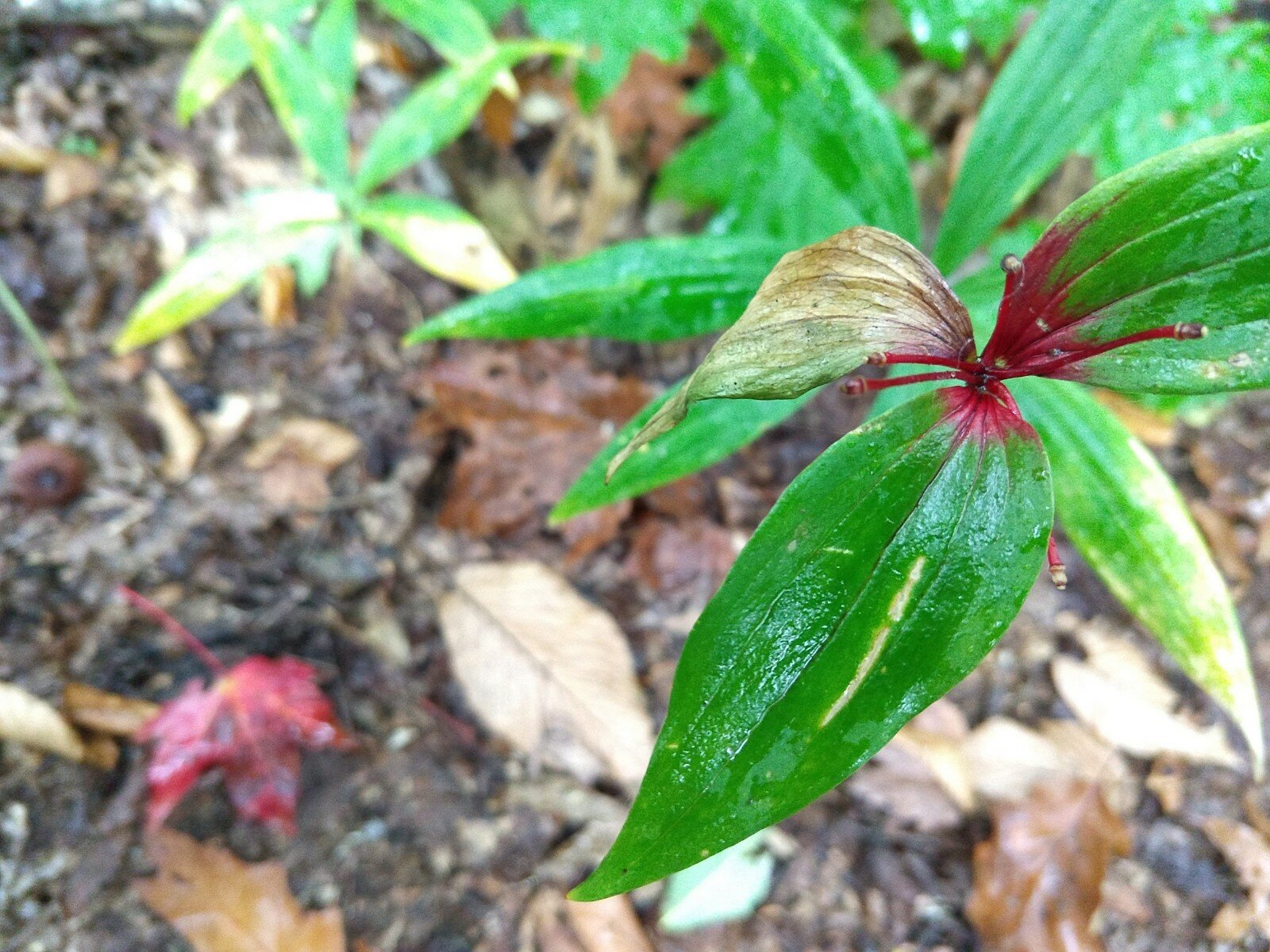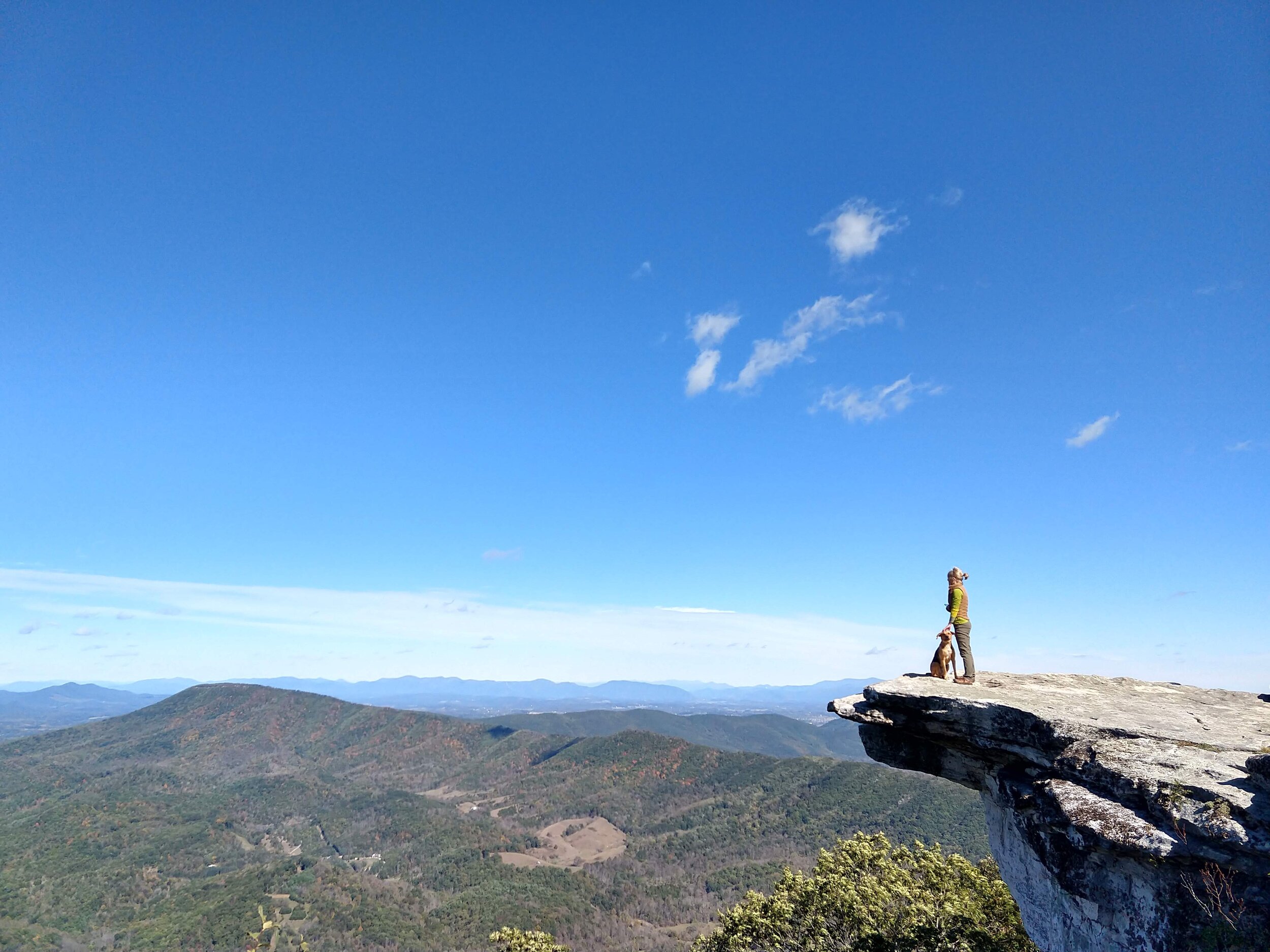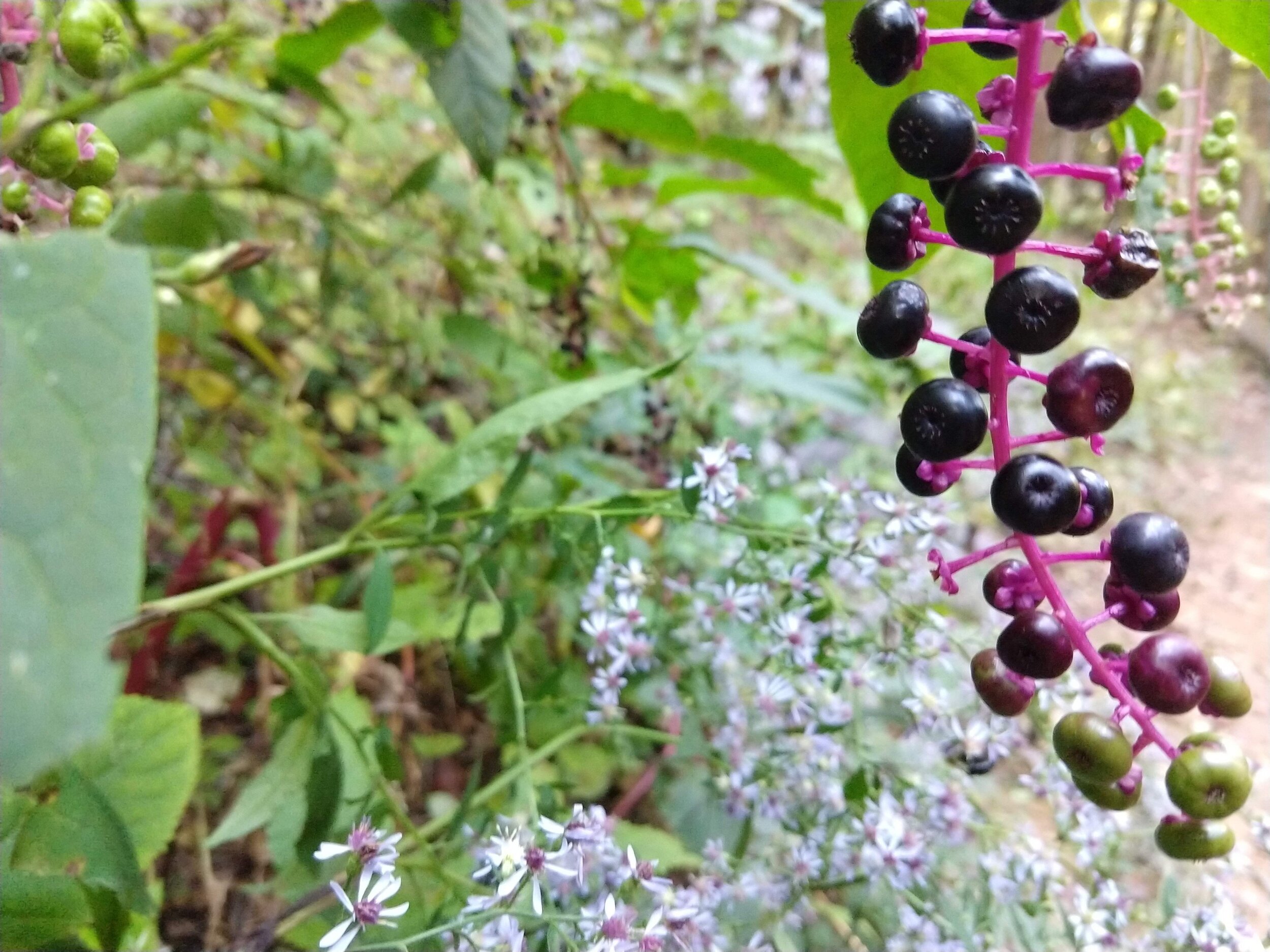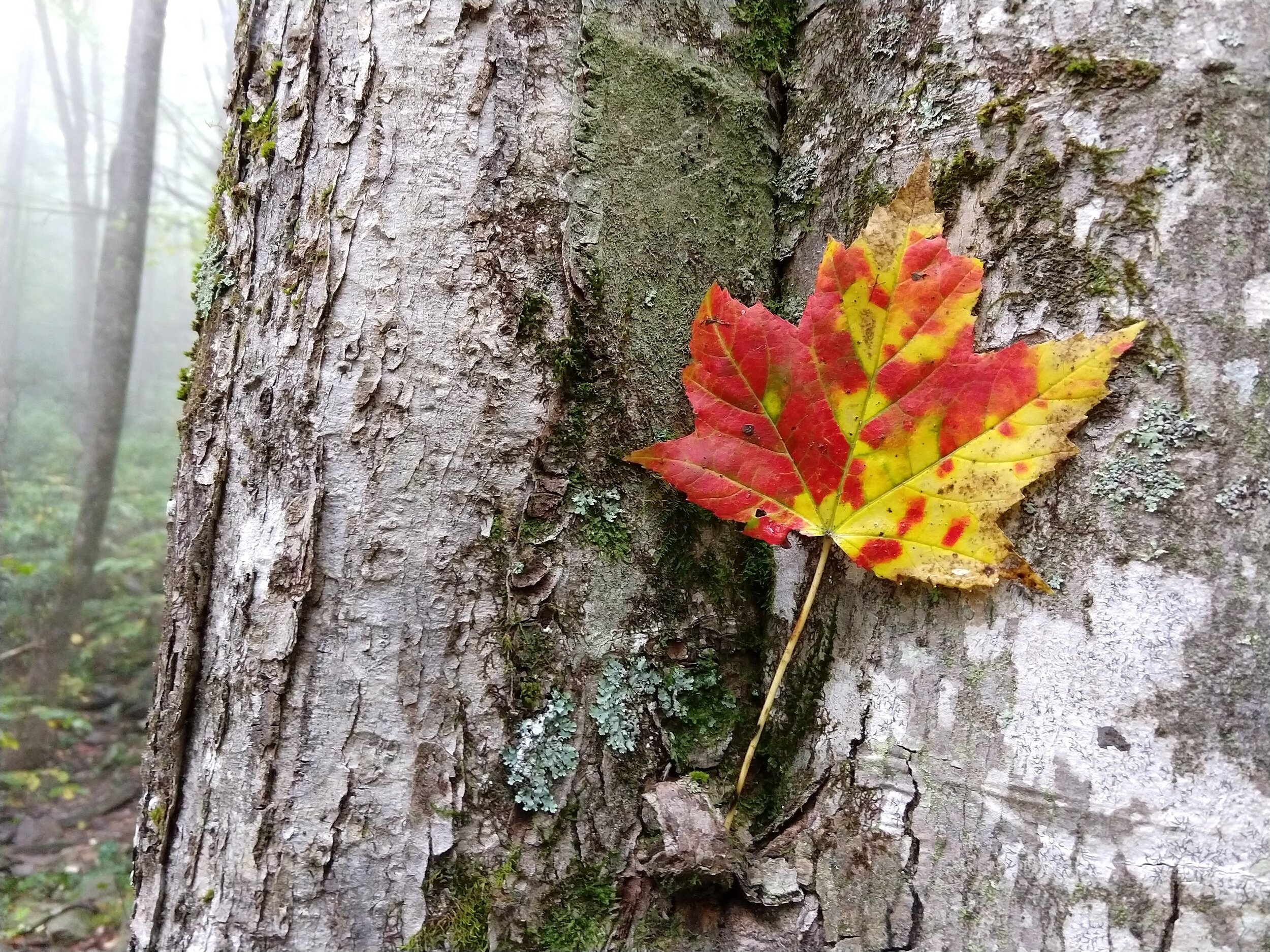Every weekend our family enjoys going on a hiking adventure. Our adventure pup Sirius (aka “Siri”- named after the dog star constellation and before the iPhone personal assistant) loves to find new streams to splash in and smelly things to roll in (hopefully in the reverse order, but often not) and I love to observe how the native plants I use to rewild human-dominated landscapes grow in less disturbed areas. This field research allows growth in understanding plant communities and how these plant combinations can best support dwindling wildlife populations. I recommend reading over your state’s natural heritage program, for PA check out Pennsylvania’s Natural Heritage Program website, its a lot to absorb, but is helpful in the process of reawakening our botanical literacy.
This month, Waxwing wandered into the Blue Ridge Mountains of North Carolina. The native plants in observation are Blue Wood Aster (Symphyotrichum cordifolium) and Three-Leaved Stonecrop (Sedum ternatum).
By far, one of my favorite Fall flowers to plant in part shade gardens is Blue Wood Aster (Symphyotrichum cordifolium)- there is something special about woodland blooms in general, but this one particularly catches your eye, with a striking pop of purple in a Fall forest mosaic of reds, oranges, yellows, and browns. They offer sweet nectar to wintering over insects and migrating ones too (notice the Monarch butterfly stopping for a sip on a blue wood aster on top of a Blue Ridge Mountain waterfall (yes, it was as gorgeous as you’re imagining, the picture just doesn’t quite do it justice). For the first time, I vegetatively propagated this plant with rooting hormone, as part of a Plant Propagation class I took at Mt. Cuba Center. This Fall, I transplanted the successfully rooted plants in my garden… they bloomed, I swooned. Did I mention that I LOOOVE this plant?
In the Blue Ridge Mountains, Blue Wood Aster grows along the hiking paths, on rocky hillsides, and even in the drainage ditches where we stayed with our friend in Black Mountain, NC. I know, Lancasterians, drainage ditches… seriously I’m jealous too. You can find this plant in Lancaster’s woodlands as well, but they aren’t as prevalent, given plant competition with aggressive non-native plants. But need no fear! You can bring this plant to a partly shaded, well-drained area of your garden, enjoying its autumnal display and build much needed habitat here in Lancaster County. Next November, you can celebrate your garden success by collecting and then scattering the seeds like party confetti in your woodland, your friends’ gardens, and accidentally leave your car windows open in transporting the collected seeds to populate our roadsides. Yes, this plant may convert you into a guerrilla gardener :).
My next favorite woodland plant observation was of Three-Leaved Stonecrop (Sedum ternatum), a Spring bloomer. Here it was found tucked at the base of a tree that was growing in a rocky island of a cold, crisp mountain stream. In the garden, this plant is fun to divide and vegetatively propagate right into the soil along a stone path or as an accent in a shaded rock garden. Just make sure it is in a microhabitat that receives some soil moisture and break from the summer’s sun, like the one found along a creekside in the Blue Ridge Mountains.
In the Spring, I’ve witnessed the striking, white, star-like blooms of Sedum ternatum attracting a diversity of small bees and flies. It serves as a groundcover, as it masses over time by creeping stems that will root when in contact with moist soil. As the weather cools, Sedum ternatum remains as a green groundcover and even offers a pleasant coppery color on its succulent leaves. Planting species that have multiple functions (ie: groundcover, nectar source, etc.) is a wise method in selecting plants for your landscape, which traditional non-native ornamental plants simply don’t offer. “Freeing two birds with one hand” is economically and ecologically wise :).
How do you rewild your garden with Blue Wood Aster and Three-Leaved Stonecrop? Where have you observed it in less human-dominated spaces? Share your insights below!

